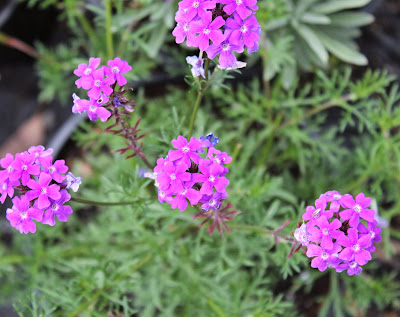Nigella damascena (Ranunculaceae)
Earlier this month I tried to grow a batch of Nigella in 140mm pots as a commercial plant for sale in the nursery trade markets. This proved difficult as it is a plant which resents being transplanted once the seeds have germinated. Losses were high so I abandoned the project and it proved that it really prefers to hangout in a semi shaded garden corner in moderately rich garden soil where it can do its thing without disturbance, usually self seeding and returning each year if it happens to like the location. A cooler more temperate climate than mine may have helped in successful growing of it also.
The 'Persian Jewels' mix of Nigella contains some wonderful colours including a true sky blue , a deep purple, a crushed strawberry pink and of course white as shown here. The bonus with growing it is for the seed pods or capsules which are also decorative and these can be picked and used in dried flower arrangements.
Common names abound for this plant and include the English, Love-in-a-Mist or Devil-in a-Bush, the latter name referencing those horny little protuberances which top the flower. Other common names reference the veil of delicate, spidery or lacy foliage bracts which surround the flowers. It is a true texture or 'stroke me' plant ideal for sensory gardens. The German Venushaarige braut im haaren (Venus haired bride) or Jungfer im grunen (bridesmaid in green flower) paint the picture nicely of this fennel like foliage.
The other species of Nigella which I have yet to grow, N. sativa, yields the seed which is sometimes goes by the name of black cumin.The aromatic and pungent seeds are more commonly used in Middle Eastern and Indian cuisine. The Indian panch phora is a mixture of nigella seed, cumin seed, fennel, fenugreek and mustard seed.There is also a tradition of using the seed as a topping for bread especially in eastern Europe where the heavy rye style loaves, which weigh a ton and just one slice will fortify you for a hike through a blizzard, are popular. I am thinking here of the Russian chernuska rye bread or the German black bread with schwartzkummel. Nigella spice seed remains less well known in Australia but the flowering species has been a popular cottage garden flower for many years.

















































